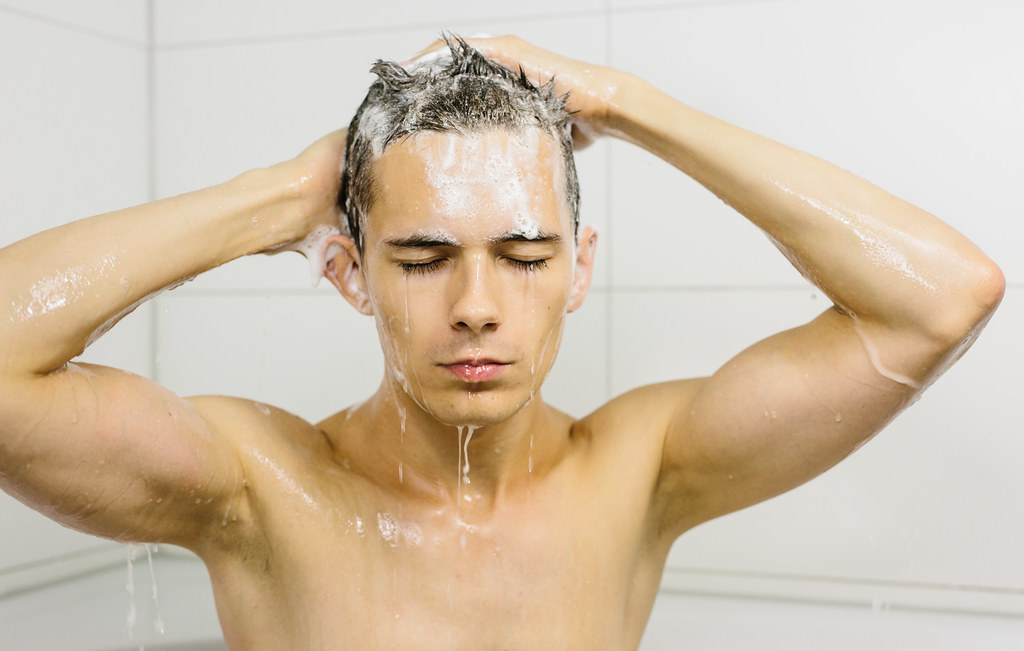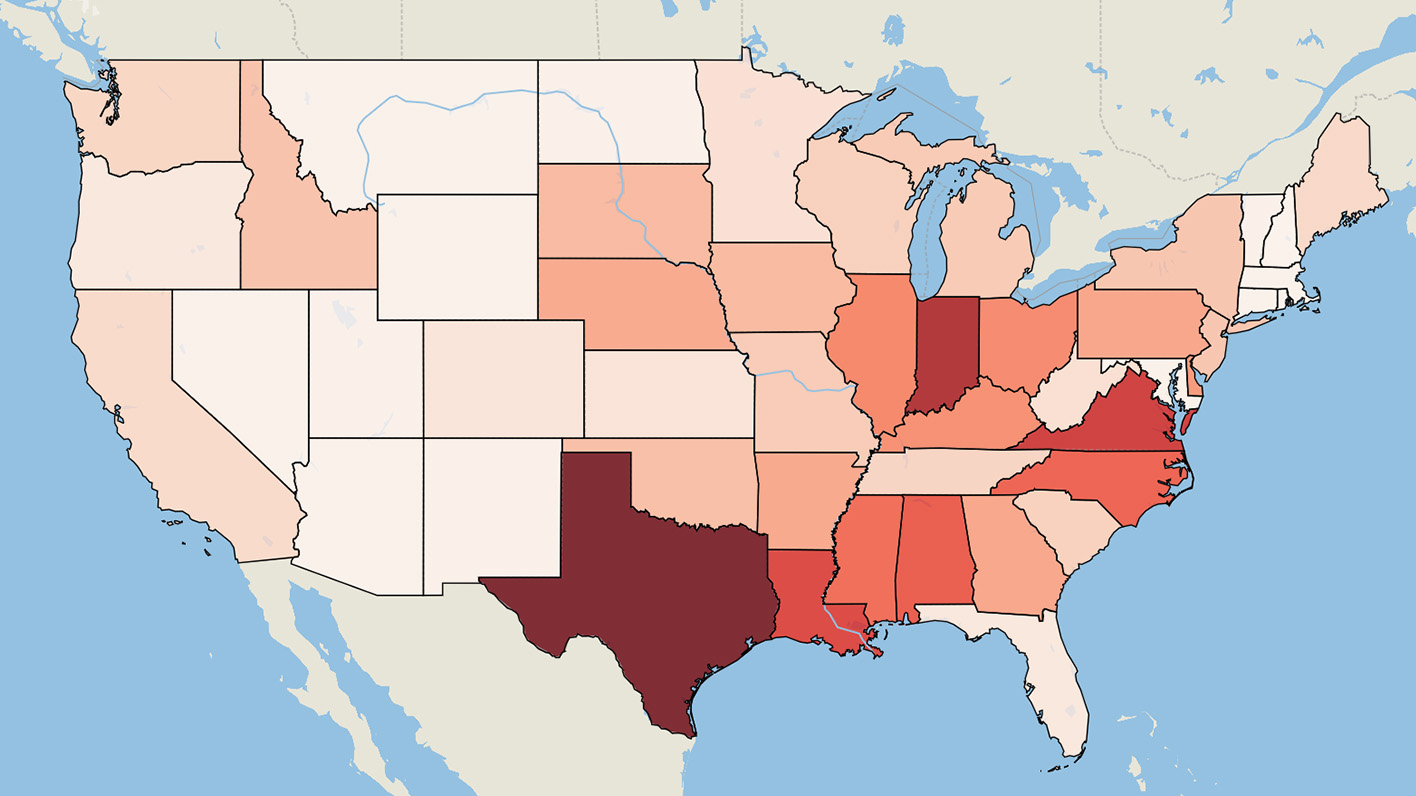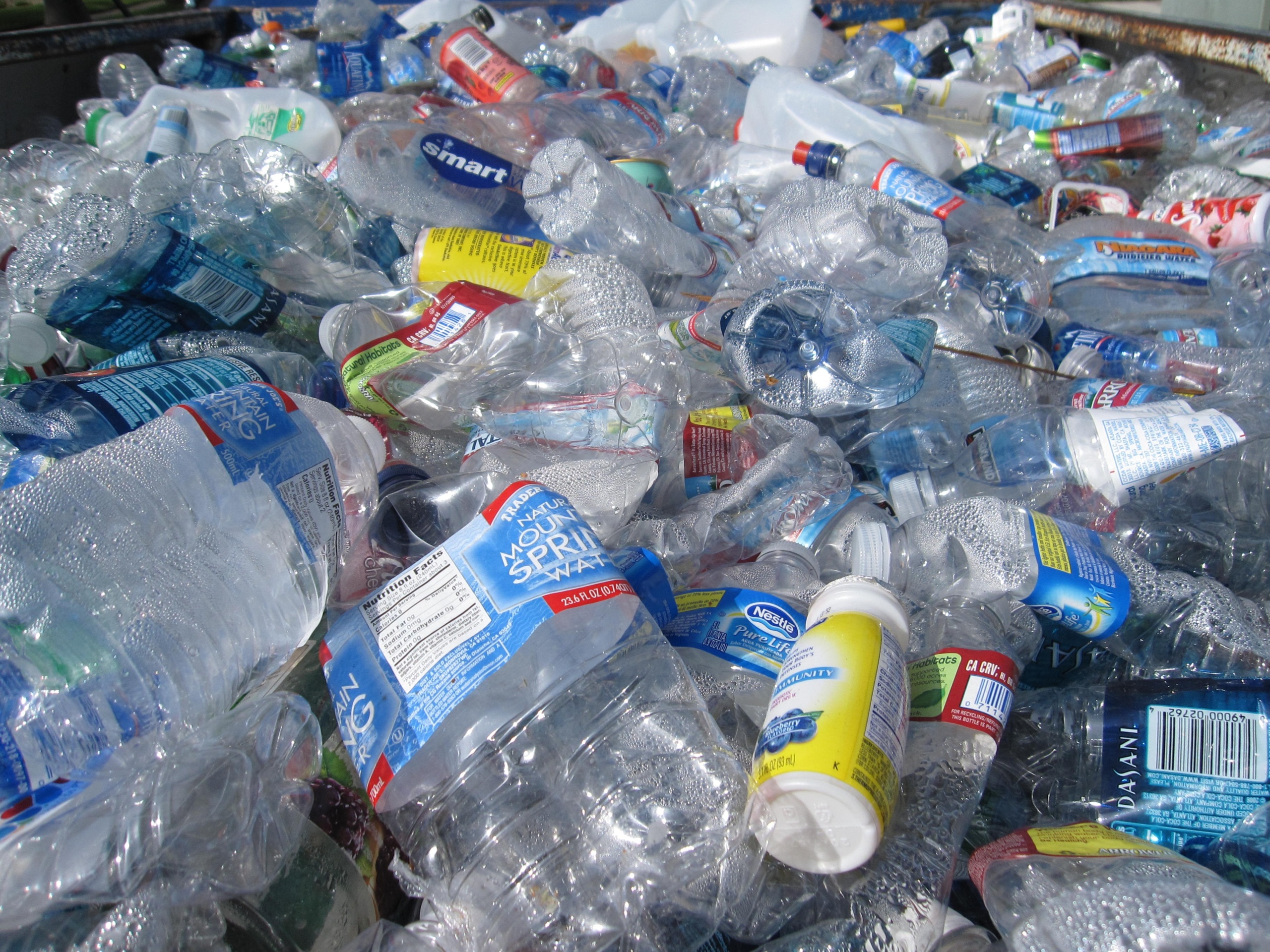
7 types of ingredients to avoid in your personal care routine
A scorecard released by U.S. PIRG Education Fund found that many popular cosmetic brands score poorly on ingredient safety and disclosure. While companies and governments need to take action to protect consumers, in the meantime, you can take steps to keep your personal care routine safe.

Many of us use several beauty and personal care products on our bodies every day. But, contrary to popular belief, these products do not require pre-market approval by any U.S. government agency. Cosmetic companies in the U.S. can put nearly any ingredient they want in their products, often without full ingredient disclosure. This can expose consumers to potentially harmful chemicals that could contribute to serious health impacts.
U.S. PIRG Education Fund recently released a report that found that popular cosmetic brands are still using toxic ingredients and failing to disclose full ingredient lists to consumers. In fact, the average grade that all surveyed brands received on fragrance disclosure was an “F.” (Check out our cosmetic brand report cards for more details.) Faced with this information, many consumers may be wondering, what can I do to keep myself safe? Ultimately, it’s these companies’ responsibility to improve their corporate commitments to keep customers both safe and informed. But until they do, we want to provide some tips on how to stay healthy when using cosmetic products.
In order to keep your beauty routine safe, the best thing you can do is eliminate products with certain unsafe ingredients and try to find products without them (more resources on this below). The ingredients included in this guide are the same ones we included in our hazardous ingredient survey because they have been linked to cancer, hormone disruption, allergies, or other health impacts.
For more information on why and how to avoid these ingredients, check out our full report.
7 types of ingredients to avoid
#1 “Fragrance” and “Flavor” Ingredients
What does “fragrance” or “flavor” mean on a label? “Fragrance” and “flavor” are not individual ingredients. These words are a signal that a product contains a mixture of chemicals that create a product’s fragrance or flavor. Under current regulations, companies don’t have to tell you the chemical components that make up the effect of “fragrance” or “flavor” and can keep them a secret.
What’s the problem with “fragrance” and “flavor”? If we can’t see the chemicals that create a product’s “fragrance” or “flavor” on a label, we can’t avoid them. There are over 4,000 chemicals that can be used to create a product’s fragrance. Of them, 1,200 have been identified as being linked to cancer, hormone disruption, or other health impacts.
What types of products might have “fragrance” or “flavor”? Surprisingly, it’s not just deodorant or other scented products. Plenty of products that we don’t associate with having a scent actually do have “fragrance.” Almost any product, from eye shadow to “unscented” lotion, can contain fragrance chemicals.
You might find “flavor” on lip products such as flavored lip balms.
What should I look out for?
- Fragrance
- Parfum
- Aroma
- Flavor
#2 Formaldehyde Releasers
What are formaldehyde releasers? Formaldehyde is commonly known as a preservative for cadavers. Formaldehyde and formaldehyde-releasing chemicals are used as preservatives in cosmetics.
What’s the problem with formaldehyde releasers? Formaldehyde has been identified as a known human carcinogen by the U.S. National Toxicology Program and the World Health Organization. It is also an allergen for some people, causing a red, itchy skin rash. People can be exposed to formaldehyde through skin contact, inhalation, or ingestion.
What types of products might have formaldehyde releasers? Nail polish, nail glue, eyelash glue, hair gel, hair-smoothing products, baby shampoo, body soap, and body wash
What should I look out for?
- Formaldehyde
- Imidazolidinyl urea
- Paraformaldehyde
- Diazolidinyl urea
- Quaternium 15
- Polyoxymethylene urea
- Methylene glycol
- DMDM hydantoin
- Glyoxal
#3 Mercury
What is mercury? Mercury is a highly toxic heavy metal that may be used in cosmetics as a skin lightener or preservative. Mercury is more likely to be found in products manufactured outside of the U.S. and sometimes in cosmetic products marketed to women of color.
What’s the problem with mercury? It can be damaging to the kidneys and brain, and can cause a variety of system-wide damages, depending on exposure and form. Given these health impacts, it is one of only 11 toxic chemicals that the FDA has restricted from use in cosmetics. However, there isn’t sufficient enforcement of this FDA ban, and it has still been found in some cosmetics.
What types of products might have mercury? Although it’s illegal to use mercury in these products in the United States, mercury has been found in skin lightening creams, anti-aging creams, and acne treatments. It is most likely to be found in products that are illegally marketed and/or manufactured outside of the U.S.
What should I look out for?
- Mercury
- Mercurous chloride
- Calomel
- Mercuric
- Mercurio
- Hg
- Mercuric iodide
- Mercury iodide
- Ammoniated mercury
- Amide chloride of mercury
- Quicksilver
- Cinnabaris
- Mercury sulfide
- Hydrargyri oxydum rubrum
- Mercury oxide
- Any product that does not provide an ingredient list
- Products available for purchase through online retailers such as Amazon or eBay that do not have a reputable seller, country of origin, or ingredient list
#4 Parabens
What are parabens? Parabens are a group of chemicals used as preservatives in some cosmetics because they prevent growth of bacteria and fungi and lengthen a product’s shelf life.
What’s the problem with parabens? Parabens in cosmetics can be easily absorbed through the skin and can disrupt hormones, acting as estrogen mimickers in the body. While shorter chain parabens (methyl-, ethyl-, propyl- and butylparaben) may have lesser hormone disrupting effects, some studies have shown that some of these parabens have effects on estrogen receptors.
What types of products might have parabens? Lotions, face cleansers, sunscreen, deodorant, shaving gel, toothpaste, and makeup
What should I look out for?
- Isobutylparaben
- Isopropylparaben
- Butylparaben
- Propylparaben
- Ethylparaben
- Methylparaben
- “Paraben-free” labels are becoming more common and are a good sign!
#5 Phthalates
What are phthalates? Phthalates (pronounced THAL-ATES) are a large class of chemicals. Phthalates are included in the fragrance as a solvent or fixative. Some phthalates have also been used as plasticizers to make nail polish less brittle.
What’s the problem with phthalates? Some phthalates have been linked to cancer, birth defects and reproductive problems. This is especially problematic for children and pregnant women. Phthalates are often not included on a product’s label because they are commonly used as fragrance ingredients, which don’t have to be disclosed under current federal law.
What types of products might contain phthalates? Nail polish and any product that contains “fragrance”
What should I look out for?
- Fragrance
- Parfum
- Dibutyl phthalate
- Diethyl phthalate
- Diethylhexyl phthalate
- “Phthalate-free” and “No phthalates” labels are becoming more common and are a good sign!
#6 Phenylenediamines
What are phenylenediamines? Phenylenediamines are part of a class of chemicals called aromatic amines, which are used for dying hair, manufacturing rubber, and developing photographs. PPD, which is more frequently used in cosmetics compared to other phenylenediamines, is used in hair dyes to help bind the color to the hair for longer lasting color, or to achieve a particular color of dye.
What’s the problem with phenylenediamines? M-phenylenediamine is suspected to mutate genetic material and cause skin allergies. O-phenylenediamine is listed on California’s Proposition 65 hazard list as causing cancer and is banned from cosmetic use in the EU because it is suspected of causing cancer, genetic mutation and skin allergies. P-phenylenediamine (PPD) has been linked to skin sensitization. Research into whether PPD could cause cancer is mixed.
What types of products might contain phenylenediamines? Hair dyes
What should I look out for?
- M-phenylenediamine
- P-phenylenediamine
- O-phenylenediamine
- N,N-bis(2-hydroxyethyl)-p-phenylenediamine Sulfate
- PPD
- Phenylenediamine
- Para-phenylenediamine
- 4-aminoaniline
- 1,4-benzenediamine
- P-diaminobenzene
- 1,4-diaminobenzene
- 1,4-phenyl diamine
#7 PFAS
What are PFAS? PFAS or per- and polyfluoroalkyl substances, are a class of thousands of synthetic chemicals that are used ubiquitously across multiple industries. They are in rain gear, non-stick cookware, food packaging, carpets, and more. According to the FDA, these chemicals are used in cosmetics for the purpose of smoothing and adding shine to the skin.
What’s the problem with PFAS? The World Health Organization’s International Agency for Research on Cancer has listed one type of PFAS, PFOA, as a possible human carcinogen, and some types of PFAS have been linked to other serious health effects, including liver damage, birth defects, and decreased vaccine response in children. To make matters worse, these chemicals have also been given the nickname “forever chemicals” because they don’t break down in our bodies or in the environment. As a result, they are estimated to be in the bodies of around 97 percent of Americans.
What types of products might contain PFAS? Lotions, cleansers, nail polish, shaving cream, foundation, lipstick, eyeliner, eyeshadow, and mascara
What should I look out for?
- Anything that has “fluoro” as a part of the ingredient name
- PTFE, teflon
- Perfluorooctane sulfonate (PFOS)
- Heptadecafluorooctane-1-sulfonic acid
- Potassium perfluorooctanesulfonate
- Potassium heptadecafluorooctane-1-sulfonate
- Diethanolamine perfluorooctane sulfonate
- Ammonium perfluorooctane sulfonate
- Ammonium heptadecafluorooctanesulfonate
- Lithium perfluorooctane sulfonate
- Lithium heptadecafluorooctanesulfonate
- Perfluorooctanoic acid (PFOA)
- Ammonium pentadecafluorooctanoate
- Nonadecafluorodecanoic acid
- Ammonium nonadecafluorodecanoate
- Sodium nonadecafluorodecanoate
- Perfluorononanoic acid (PFNA)
- Sodium heptadecafluorononanoate
- Ammonium perfluorononanoate
Other resources that can help you shop safely:
Our holiday cosmetic shopping guide
The Clearya Chrome extension or app
Environmental Working Group’s Skin Deep Database or Healthy Living app
The Think Dirty app
Topics
Authors
Danielle Melgar
Food & Agriculture, Advocate, U.S. PIRG Education Fund
Danielle works to ensure our food system produces enough nutritious food to feed everyone, without threatening our health, the planet, or the ability of future generations to grow food. Danielle lives in Chicago, where she enjoys staying active in the outdoors, trying out new recipes, and writing short stories.
Danielle Melgar
Food & Agriculture, Advocate, U.S. PIRG Education Fund
Danielle works to ensure our food system produces enough nutritious food to feed everyone, without threatening our health, the planet, or the ability of future generations to grow food. Danielle lives in Chicago, where she enjoys staying active in the outdoors, trying out new recipes, and writing short stories.
Find Out More

Superfund Back on Track

The Threat of “Forever Chemicals”

Who are the top toxic water polluters in your state?
